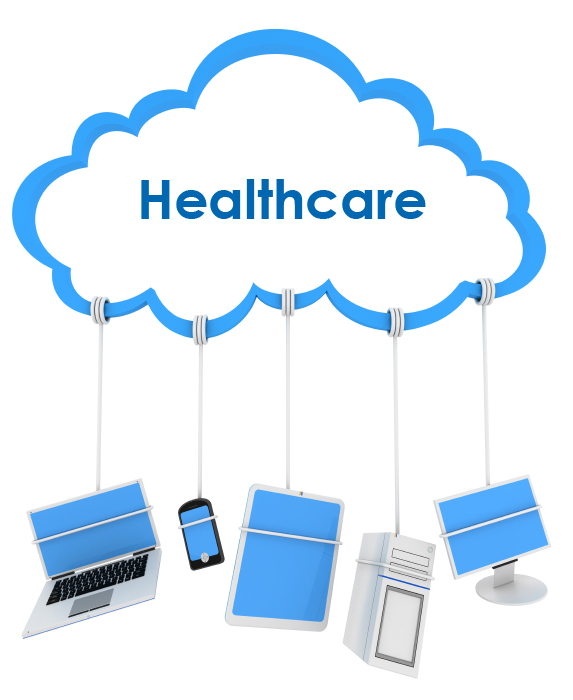The cloud. Heard of it lately? Thought so.
Tech buzz words such as cloud and social are reaching all industries and healthcare is no exception. But how does the cloud apply to hospitals, nursing homes, home health and other segments of healthcare? Many leaders in the industry are actively trying to figure this out.
Defining the cloud

For the uninitiated, cloud computing (Wikipedia) is a way of delivering computing as a service rather than a product. Think of it like the electricity grid where you can turn a light on without actually having to have the infrastructure within your home to generate that power. You are reaching into the electricity cloud and tapping into a shared resource. This is what makes the cloud so attractive. Flipping the switch is a lot cheaper and simpler when you don’t have to do the work behind the scenes.
Why the cloud is growing in popularity.
We all use the cloud on a regular basis, even if you don’t know it. Checking your bank account online? Email? Facebook? It’s all an example of the cloud which is both consumer and enterprise driven.
Big companies like Amazon, Google, Dell, HP and so on are all investing heavily in cloud technology. Many in the healthcare industry are as well. We’ve seen numerous initiatives undertaken such as electronic health records (EHR) and staffing systems that use the cloud to improve efficiency and cut costs. But why is this?
- Access anywhere. Cloud apps can usually be accessed via mobile, desktops, laptops, tablets and any other device with access to the internet. There will be some restrictions depending on the application, but the point is, you’re not chained to one computer to access a specific program.
- Scalability. A cloud application comes with built in infrastructure and may be used by other systems that you want to share data with. Rather than having to get all your partners on the same proprietary system you’ve developed internally, you and your partners can instantly connect without a heavy financial investment.
- Fewer required resources. When you reach into the cloud and use software as a service, the technology already has its own IT support. For example, let’s say you wanted to implement a staffing system. In-house, you’d have to hire more IT people, devote more dollars and take time and resources away from other initiatives to implement and support a solution. But a cloud app comes with all that built in.
- Borrowed expertise. In many cases, you don’t have the appropriate IT expertise on staff. By using software-as-a-service, your organization gets smarter externally to customers without actually putting forth a huge investment.
Concerns in the cloud
While the cloud very much looks both the present and future of technology, there are legitimate concerns that must be debated internally by any organization.
- Development. New updates to the system are controlled by the developer of the cloud application. You can make requests for new features, but unless the developer feels there is enough demand for it, you may not get the feature you want.
- Security. A cloud app is no different than internal IT infrastructure in terms of security. The same best practices have to be used and the same measures such as data encryption must be taken. The difference is that you are relying on someone else’s security measure rather than your own. This brings us to…
- Control. This is really what it comes down to. Are you willing to give up some IT control to gain all the advantages inherent in cloud computing that have been discussed here? At the end of the day, this is the question you have to answer. If you’re not comfortable with putting IT initiatives into the cloud and giving up some control, you have to seriously consider whether or not it’s the right direction.
Healthcare and the cloud
Most of what has been discussed applies across all industries. Within healthcare, the benefits the cloud has brought and continues to deliver are many (read two case studies about the cloud and healthcare). Among them:
- General data storage
- Electronic health records
- Staff scheduling
- General practice guidelines
- Home monitoring
- Business intelligence
- Real-time collaboration
Adoption has been ramping up in the industry. A 2010 survey indicated 73% of healthcare decision makers were planning on moving applications to the cloud. Clearly, this is the direction we’re headed in the industry.
The key for healthcare decision makers is to figure out what initiatives belong in the cloud and what doesn’t. Private clouds are a popular choice and those using staffing systems are almost all in the cloud given the upside and lack of risk. On the flip side, due to privacy concerns, patient data has experienced a slower adoption rate. A lot depends on the industry in terms of what’s available and what’s widely accepted. In determining your technology strategy, cloud definitely has a place, but the “what” and “where” is up to you.
 See demo
See demo